Reviewing The “History” Of Team Yankee – Part Four: Prognosis
September 18, 2017 by oriskany
Welcome back, Beasts of War, to our continuing explorations into the military background Team Yankee. With these articles, myself and Ben Collins (@benc) are sketching out the broad outlines of the military situation that may have affected the start, course, and outcome of a potential Third World War in the mid-1980s.
So far, we have looked at the source material for Team Yankee in Part One, compared the strengths and makeup of the armies in Part Two, and looked at how such a war may have unfolded in Part Three.
The overall aim has been simply this: where does our “view” of a 1980s World War III actually come from, how accurate is it, and how does this effect what would go on a Team Yankee table top?
Novels Of Nightmare
World War III In The Written Word
Obviously, the biggest influence to our Team Yankee tables is the novel “Team Yankee”, and by extension, it’s “parent” novel, Sir John Hackett’s “The Third World War: August 1985.” We’ve already covered these in some detail, but they certainly weren’t the only World War III “techno-thriller” novels that came out the period.
The top of my personal recommendation list is Ralph Peters’ “Red Army.” If you’re a Soviet player in Team Yankee, READ THIS BOOK. If you’re an American, British, or German player…READ THIS BOOK anyway. For my money, it’s the best World War III military novel ever written, both in terms of storytelling and undeniable military realism.
Red Army has an ensemble cast of characters, from the commander of the First Western Front, through to his staff, his army commanders, divisional commanders, and battalion commanders. There are fighter pilots, political officers, airborne battalion commanders, heavy artillery battery commanders, and finally, there’s a motorized rifle private.
This structure allows Peters to show the complete cross-section of the Soviet Army. There are characters from the many regions of the former Soviet Union. Some are heroes, some are cowards. Most are just human beings trying to survive the crisis and return to their lives. Some live, many die, showing the heartless lethality of World War III.
Ralph Peters was a Lt. Colonel in US Army intelligence, working in West Germany as a Foreign Area Officer specialized in Russia military studies. Whereas Harold Coyle’s Team Yankee gives a perfect vision of the 1980s US Army (but an almost cartoonish view of Soviet forces), Peters treats the enemy with the respect they deserve.
Red Army also includes the dynamic of propaganda and geopolitics. Rapid penetration or Soviet spearheads makes “hostages” of West German cities like Hannover, cancelling NATO’s ability to use nuclear weapons. Television is carefully used as a Soviet weapon to influence public opinion in the media-dominated societies of NATO.
I won’t spoil the ending for anyone who hasn’t read it. But suffice it to say that Peters’ World War III lasts only two and half days, and absolutely devastates much of Europe (especially West Germany). It ends on a political decision that is surprising yet all too believable.
Then we have Tom Clancy’s “Red Storm Rising.” To the novel’s credit, it tries to encompass a great deal, showing World War III from virtually every angle. This was early in Clancy’s career, when he was still influenced by Larry Bond (designer of the wargame Harpoon and Command at Sea), so the naval operations are very well done.
For a Team Yankee player, though, I don’t think Red Storm Rising offers very much. The front-line ground combat, what little of it there is, isn’t very authentic. The novel’s a great read for naval and airmobile action (the Soviet assault on Keflavik, Iceland is probably the highlight). And the war lasts an unbelievable thirty-six days! So I usually skip it.
Another great World War III battlefield novel is “Chieftains” by Bob Forrest-Webb. This one was recommended to me by John Lyons, the “tank god” himself. Put most simply it’s a British version of the Team Yankee novel, where the unit portrayed (14/20th Hussars) fields Chieftain battle tanks instead of M1 Abrams.
Like Team Yankee or Red Army, Chieftains is better than Red Storm Rising because it stays within a strictly military context, it doesn’t try to show the whole war or explain how it starts. In Chieftains, the war only lasts three days (as far as we know), another plus. Finally, Chieftain came out before these other novels, first published in 1982.
Chieftains has one big advantage over Team Yankee in that the Soviets are not portrayed as incompetent. In contrast, Team Yankee has an American counterattack into East Germany in the first week of the war, something we definitely don’t see in Chieftains.
World War III In Film
When it comes to film, we seem to have a lot less to go on when it comes to World War III in the 80s. Outside of “nuclear” movies like the superb “By Dawns Early Light” and “The Day After” there isn’t much in the way of conventional combat films in this setting.
Probably the famous (or infamous) example is Red Dawn. Okay, the premise is laughable, the forced patriotism is a joke, and the portrayal of Soviet and Latin American soldiers is borderline insulting. Also, the film mostly portrays insurgent warfare which isn’t really what Team Yankee is about.
When Red Dawn does portray conventional warfare, it does so with shocking inaccuracy. The “tank battle” scene shows tanks having to stop to fire, missing five or six times before finally landing a hit. It’s a World War II tank battle with World War III proxy tanks. And of course, the director John Milius had a serious axe to grind with the Soviets.
Wargames Of The Unthinkable
Where films have failed us, however, wargames have come through in fine style. In addition to Battlefront’s Team Yankee, there is a library of great wargames that have tried to imagine what World War III in Europe would be like. It may be nostalgia, but most of the better ones come from the 1980s, when this war was still a “serious” prospect.
Probably the greatest of these wargames is the “Assault” series by Games Designers Workshop (GDW). Starting with a US vs. Soviet base set, the game presents a command-level look at large mechanized battles in 1980s Germany. Each piece is a platoon or a section, and each hex is 250 meters across.
Because each side may field up to a hundred pieces in a large game, and the game board can present an area representing several square miles of terrain, players can engage in plausible, realistic engagements on the actual scales at which they would have taken place.
GDW’s Assault presents the full panoply of a regiment or brigade-level combined arms combat. These include attack helicopters, strike aircraft, on-board and off-board artillery assets, mechanized infantry, anti-tank missiles, airmobile troops and armoured cavalry.
The detail in the game is amazing. It tracks to-hit probabilities and penetration characteristics of perhaps half a dozen types of ammo, including HE, AP, ATGW missiles, and the top-of-the-line APDSFS-DU (armour-piercing discarding sabot fin-stabilized depleted uranium) “silver bullet” projectiles.
Which way a counter is placed in the hex actually reflects its “formation,” allowing players to opt between fast column formation or more tactical “on-line” formation. There’s also a great mechanic where all counters start inverted, and even dummy counters are provided to allow a great bluff, deception, and fog of war element.
If you’re interested in zooming out still further, there are operational-scale games like “Red Storm Rising,” a zone-based board game where you can recreate the entire invasion of Germany as seen in the Tom Clancy novel. There are also games like NATO, Fulda Gap, and a whole range of others that put you in the boots of a World War III general.
Other Theatres?
They call it “World” War III for a reason. Just because Team Yankee takes place in West Germany, doesn’t mean that fighting would’ve been restricted to that theatre, or that our games should be either. The trick here is to remember the world’s trouble spots” as they were in the 1980s, not the present day.
The first spot to consider is Afghanistan. In 1985, the Soviet Union was still fully invested in an anti-insurgent war in this country, having invaded in 1979 to prop up a failing Communist government. If World War III starts in Europe, might the US or an ally like Pakistan seek to exploit potential Soviet withdrawal (sudden and chaotic as it would be)?
The Middle East presents further grim possibilities. Turkey is a NATO state, and any attempt by the Soviet Black Sea fleet is going to cause all kinds of problems in this region. The Soviets can invade Turkey from the Caucasus, and might even enlist the aid of Syria (a powerful an united Soviet ally in the 1980s) to help open this southern gateway.
At the time, Syria had just taken a beating from Israel in their 1982 “Peace for Galilee” invasion of Lebanon. In the mid-80s, Syria was still pulling strings in Lebanon’s civil war, and Soviet help in Lebanon might be Syria’s price for helping the Soviets in Turkey.
In another of his novels (“Sword Point”), Harold Coyle postulated a war in Iran, where a Soviet invasion from the north to get at the Persian Gulf oil was met by Us intervention from the south. Basically, we’d be putting US vs. Soviet units on a desert table, in a strange but plausible mix of Team Yankee and the First Gulf War.
There are possibilities even further afield. North and South Korea is always a tinderbox. The Soviets might prod North Korea into action simply to keep too many American ground units or carrier battle groups to other theatres. What the Chinese do here will be crucial. After all, if South Korea or even Japan comes under threat…
Central America was another hot zone in the 1980s, with US-backed governments in Honduras and Guatemala, communist “Sandinistas” in Nicaragua, and civil war in El Salvador. Again, the Soviets might leverage influence here to keep the US strategic picture as complex as possible.
Conclusion
We hope you’ve enjoyed this part of our Team Yankee article series. What are some of your ideas about the books, movies, and wargames we’ve discussed? Which material would you add to the list? What ideas do you have for World War III in arenas outside of Western Europe?
Come back next week when we close this series with some ideas for battles, campaigns, and games for Team Yankee that might be just a little out of the norm, putting some of what we’ve looked at so far to the test. In the meantime, “advance and engage” in the “Firestorm Red Thunder” campaign, and share some of your war stories below!
If you liked this article and want to know more about the history behind Team Yankee, make sure to check out the Weekender Interview with oriskany below…
Click On The Image and you’ll be taken directly to the segment in the show to learn more.
If you would like to write an article for Beasts of War then please contact us at [email protected] for more information!
"The top of my personal recommendation list is Ralph Peters’ “Red Army"..."
Supported by (Turn Off)
Supported by (Turn Off)
"There are possibilities even further afield. North and South Korea is always a tinderbox..."
Supported by (Turn Off)





























![Make Your Own Star Wars: Legion Heroes! Rebel Agent & Officer Set Review [7 Days Early Access]](https://images.beastsofwar.com/2025/12/unboxing-atomic-mass-games-star-wars-legion-rebel-alliance-agent-_-officer-coverimage-225-127.jpg)











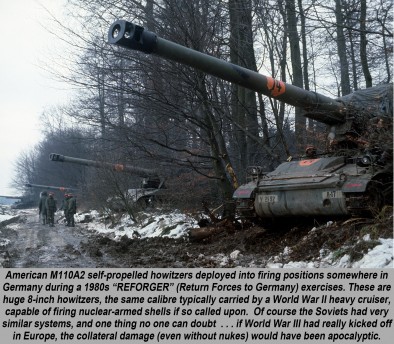
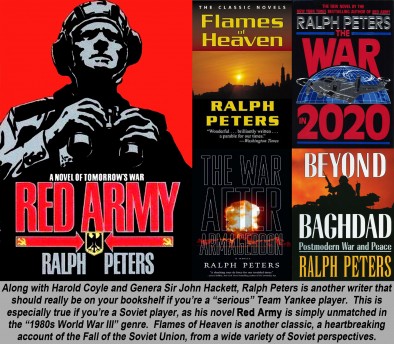
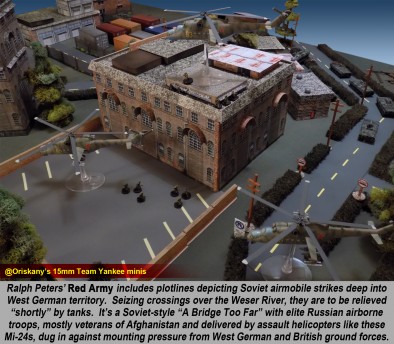
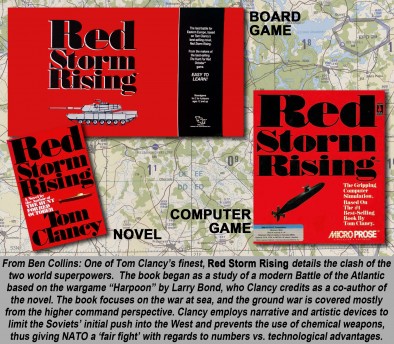
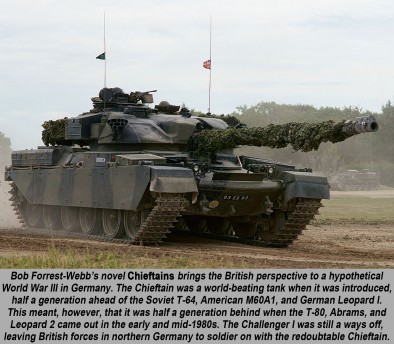
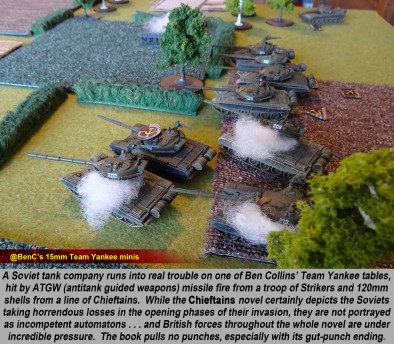
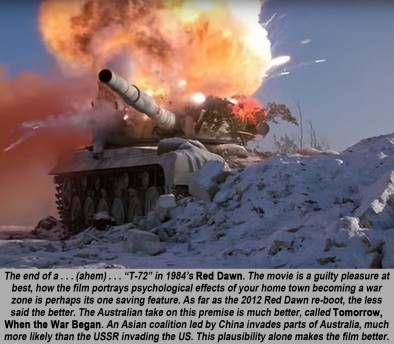
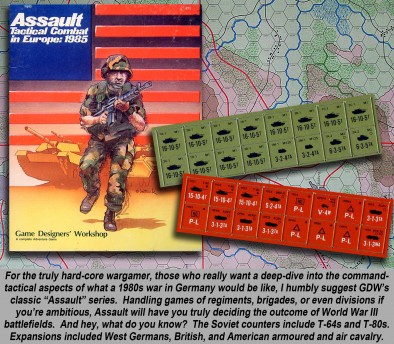
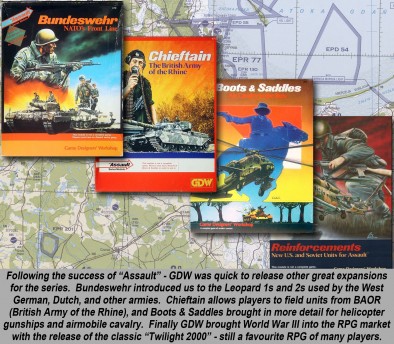
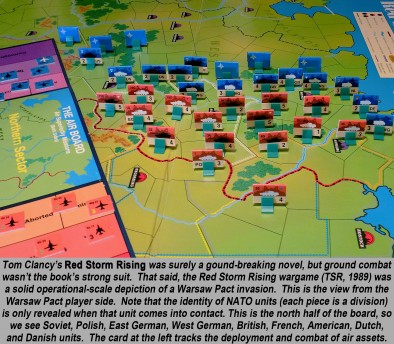
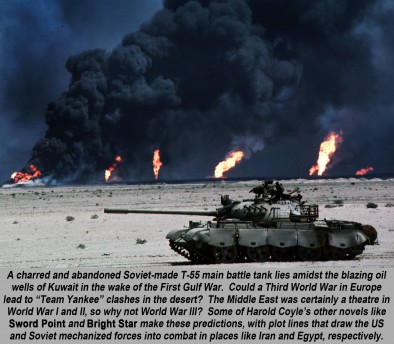

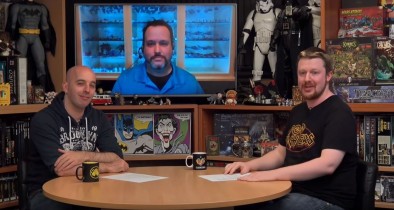





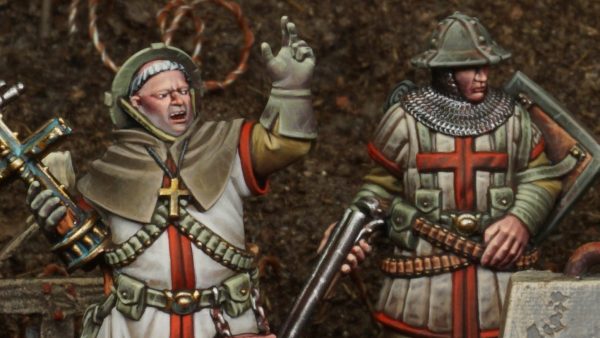
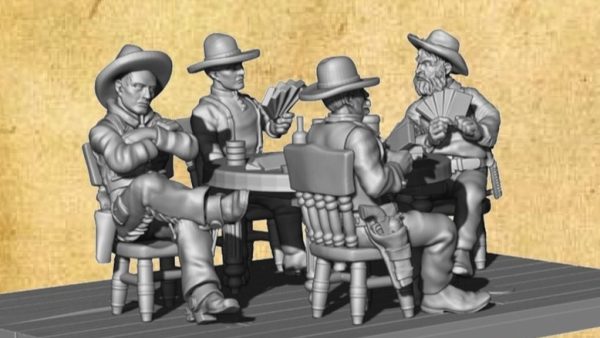
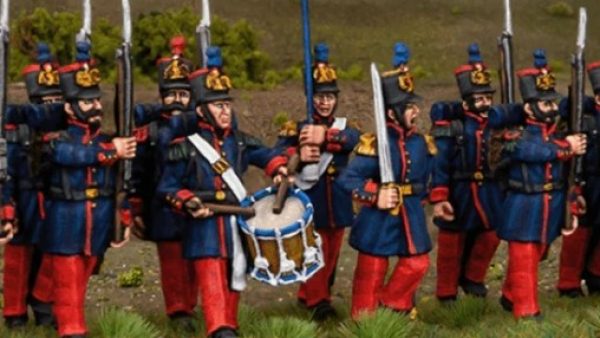

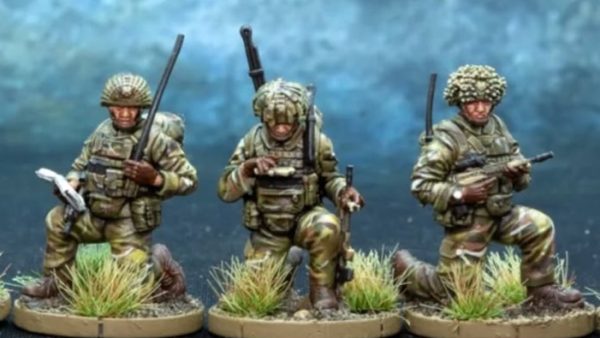



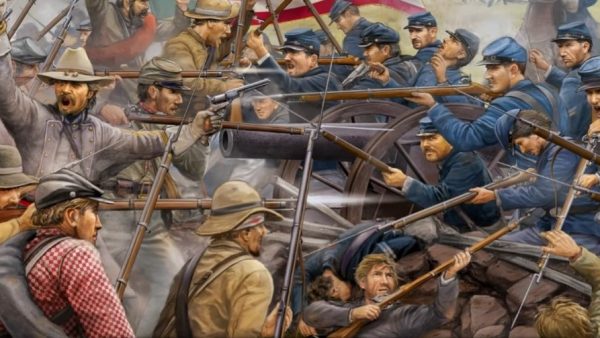




















@oriskany Good work sir. Outside of the European theatre I’d like to game the Soviet invasion of the Middle East using Red Storm Rising or Swordpoint (IIRC) for inspiration for the scenarios. After all the main aim of the war for the Soviets in RSR was to defeat NATO to enable an invasion of the ME/Persian Gulf to secure oil. Those nice open desert tables might favour an expeditionary force of Leopard 2’s though! Best bring T-64 with the extra reach of the Songster ATGM!
Great work on your part as well, @benc . 😀
Yes, Sword Point was Harold Coyle’s US/USSR war in Iran, Bright Star was his novel for a conflict in Egypt.
Especially fitting considering how many armies in the Middle East use M1A1s today (Egypt, Saudi Arabia, Kuwait, I think.
‘Bright Star’ was the name of the exercise that practised deployments to Egypt, I deployed on one when I was younger but only as far as Cyprus. You can imagine how sad I was at having to spend a few weeks enjoying the…er…hospitality of the island instead of being in the Egyptian desert.
Was Cyprus a bad place to be? Or a good place? I honestly don’t know I’ve never been there. In the USMC there were also conflicting tales about whether a certain place was good or bad to be deployed to.
Okinawa was divisive. Some loved it, some hated it.
Our bases in Hawaii were also split. They were GREAT if you were single and could live in the barracks. If you were married with a family the cost of living would kill you.
Almost everyone hated Guam. They said Guam stood for: “Give Up And Masterbate.” 😀
I’ll never be able to listen to news stories about Guam and North Korea in the same way ever again. Classic!!!
😀
Another great read @oriskany!
Oddly enough Team Yankee is the only Cold War novel set you mentioned that I haven’t read. Started with RSR back when I was a child, read Red Army when I decided to play Soviets in BF’s Team Yankee, and Chieftains not too long after Red Army. I agree with you on book choice: Red Army was the best.
Speaking of Chieftains their are a couple of interesting scenarios I think you could extract from the novel. Specifically a mission based on some of the NATO stay-behind units. Where a small team of light units have to hit their objectives quickly before too many enemy heavy units arrive.
Indeed, @wayton – when it comes to Red Army – “great minds think alike.” 😀
I like your idea about scenarios based on the stay-behind units. If I remember correctly, these were special forces in the novel Chieftains. I’m not familiar with the BF Iron Maiden release, did they include any information on these units for the British? If not, I’m sure players could house-rule a few bonuses and buffs to the British infantry cards.
Not specifically no, but apart from the SAS element you have all the vehicles. IIRC it was a unit of Scimitars supporting Spartan mounted SAS. Which could be modeled using the Medium Recce Squadron from Iron Maiden, though you would need to limit Division forces(probably to just strike aircraft) and buff the Spartan Support Troop.
Off the cuff I’d say give them the Observer rule to help call in air strikes, scouts so they can move and stay GtG, and probably decrease their courage/morale/rally to 3+. British troops in Iron Maiden are already pretty nasty in C&C, but a case could be made for decreasing their skill/assault/counterattack to 2+. I think the addition of observer and scout would be more then enough though.
Small, light, fast armored cars and APCs are always fun to play, especially if you get to set up ambushes and the like. In some games, people like tanks because they are more survivable. I say EVERYTHING can kill just about everything else in Team Yankee, so you might as well play something that’s fast and nimble! 😀
Nice article again
Just a little add
http://www.independent.co.uk/news/world/europe/stanislav-petrov-dead-soviet-officer-nuclear-war-1983-saved-world-dies-died-77-robert-de-niro-a7952361.html
Great reminder, @torros . I hate to admit it, but I was up l very late writing / building graphics for a couple of these articles, and with this kind of subject matter, at 2:30 in the morning, your mind starts wandering in some very uncomfortable directions.
We really did come close a couple of times.
Thanks for the wonderful series of articles, a wonderful and informative read. I hope Battlefront sits up and takes notice of all the opportunities of the game they have… as well as dealing with some of the threats of such a setting (after all, they *eventually* did Hero Tankovy Companies for WW2, so I can only hope they will make the shift for the Red Army with the T-80). I will be very very interested when that happens!
One plug if I may… whilst the premise is again a little bit of a stretch given how far the war lasts, the computer game World in Conflict by Massive Entertainment was my introduction to the idea of a Cold War gone hot. The tone of the setting was really well handled, as was the emotional and psychological effects of the war… the Soviet Assault DLC did add a nice leavening of Soviet missions into the campaign as well. The invasion of mainland America is also based on an actual military objective with minimal forces, as opposed to an attempt at conquest. I’ll leave this here: https://www.youtube.com/watch?v=h5Vmf3u0D1A
There is also, of course, the stellar Wargame: Red Dragon and Wargame: European Escalation games… although they are less about story and more about simulation! Which brings me full circle back to the T-72 and its autoloader… in Wargame, Russian tanks don’t suffer a penalty to RoF when pinned or otherwise shellshocked because it’s a machine doing the loading… most Western tanks do! How about that for a neat solution haha
Once again, thanks for the articles!
Thanks very much, @mythickhan – I totally agree … the new T-64s and other equipment are a great step forward with the Red Thunder release, now we just have to get ahold of some T-80s and we’re all set!
A few ideas about incorporating T-80s (and other slightly more advanced equipment) in Part 05. 😀 One more to go, folks! 😀 😀
First off, thank you chaps. I’ve really enjoyed these articles and the ‘what if’ possibilities they have kicked off for me for modern gaming, I played a lot of 1/200 scale moderns in the early nineties and I’m tempted to go digging in the loft to see how much stuff I still have. Also you are responsible for a growing attraction to all the new 15mm shineys that are appearing for Team Yankee, I will hold you responsible when my resolve finally cracks and a load of new toys suddenly appear in my collection, I will have to explain to wifey darling that the internet made me do it!!
At School in the late seventies and early eighties I remember clearly how war and ‘Mutually Assured Destruction’ seemed inevitable, (MAD is such an appropriate acronym…). Watching the Berlin Wall come down the day after my 23rd birthday is a day I’ll never forget, it seemed like the shadow we lived under had lifted. Shame we have new ‘shadows’ to contend with…
I’ll also make the effort and order copies of ‘Chieftains’ and ‘Red Army’, they’ve been on my Amazon wish list for ages (along with several dozen other books) and you’ve provoked me to take the plunge.
I was in boot camp for the USMC (just turned 18) when the Wall came down. There was a tangible feeling of relief in our barracks, I can assure you. You’re just entering the military and news comes in the the “big one” probably isn’t going to happen after all. Little did we know Saddam was already laying plans, but I’ll take Saddam’s Republican Guard over the GSFG any day.
Maybe I’m just crazy, but while writing these article or even after a good Team Yankee game, I always want to listen to “Winds of Change” by the Scorpions?
What happened to that feeling? And how to we get it back?
https://www.youtube.com/watch?v=n4RjJKxsamQ
Nice work oriskany.
As a child i had bad dreams after watching “The Day after”. And it still gives me chills.
Actually i think the cuba crisis was way more nearer to give humanship the end. The soviet coup d’etat in 1991 was another situatation, which could have ended badly for all.
Generations after us are lucky not to live with the situation, like living on the tip of a match. We may have other sources of danger. But these looks to be over. Oh, i forgot Trump and Putin 😉 Who said cold war?
Thanks for the great post, @andre77 🙂
The Cuban Missile Crisis in 1962 was definitely a close one, as was (and many people don’t realize this) the Yom Kippur War of 1973. A lot of it is conjecture / still classified, so I won’t get into the details, but the US, USSR, and possibly even the Israelis were getting ready for some serious escalations.
I definitely do remember the Soviet collapse and coup in 1991. Everyone was happy, I was a little worried, just hoping this all went down right . . .
I was also a little worried when the Arab Spring first hit Egypt in 2011. Not nearly on the same level, but the sheer amount of firepower Egypt has at her disposal, and the factions of her army and populace who still want Israeli destroyed, is far in excess of anything seen since 1973. So far nothing too scary has developed out of there, but it bears watching …
And finally, a few days before the Team Yankee Boot Camp (ironically), when the Turks shot down that Russian fighter in 2015, and then Turkey (a NATO member state) immediately calls a meeting per Article IV of the NATO charter. I’ll admit I was much more worried about my flight to Coleraine being cancelled than atomic war, but I remember going into the breakroom at work and everyone standing around comparing how thin their new iPhones are.
Do you people realize Cold War II just started?
I dunno, sometimes I worry too much.
Agree 100% about The Day After. It’s still on YouTube somewhere, the attack starts almost exactly midway through the movie. That’s 1983, so the effects are a little dated, but that’s not the point. They get the message across, especially regarding the aftermath.
I could only stomach ‘The Day After’ once, I’ve never been able to watch it again.
Totally agree about ‘Wind of Change’ provoking ‘that feeling’. Sometimes being aware of the world ain’t fun. I work in an ambulance control room and we have a 24 hour news feed running on one of our plasma screens, seeing the North Korean sabre rattling lately has given me a few uneasy thoughts as well.
That sounds like a job that’s gotta get to you sometimes. 😐
Mostly it’s ‘same old, same old’. But now and then it has it’s moments.
I can only imagine.
I also had nightmares after “The Day After”. It is a highly underrated movie and I am glad it got a mention (even if it was to say it can’t be used as reference material)
I think it’s still the highest-rated television event in US history. Or it was at the time, or something like that.
BBC also made a drama documentary production called Threads, if possible its even grimer than The Day After.
Indeed, @admiralandy – @pongo50 was bringing up “Threads” further down in the topic, I believe. Another grim movie, appropriately so. 😐
We were very close to armageddon in the 80’s :
http://www.bbc.com/news/world-europe-24280831
I must say that of all the jobs in the world that one has to be the toughest one possible.
Get it wrong and you either start a war or be responsible for the loss for your side.
Great post, @limburger – and your point about how tough the job is is well taken. This is what makes some of the recent reports out of the USAF missile force so scary. The technology in some of those silos is tragically out of date (as in 5.5″ floppy discs). Security is terrible, morale is in the sewer. There are incidents I could quote . . . but check out this video starting at 4:28 . . .
https://www.youtube.com/watch?v=P_DpUF1fvuc
Somehow that doesn’t surprise me, but it is scary to think about how much we trust in people to do their job when we don’t give them the support & tools they need to do it.
It also makes me wonder what the average missileer (sp?) thinks of your current president.
The same applies to their counter parts on the soviet side. *eep*
I don’t discuss our “president.” I made a promise to @warzan not to discuss politics. 😀
And as with many things from that era we have barely begun to discover what the other side was like :
https://www.rt.com/news/403625-nuclear-soviet-officer-died/
Great post, @limburger . I think @torros also mentioned this up above. 😀
I loved the book reviews!!! Reference materials for games don’t always have to come from game system fluff or obscure historical web sites.
Yeah, @gladesrunner – a lot of sci fi and fantasy games are based on fictional reference material like movies and novels. So technically they are almost “historical,” like that time we did the Battles of Hoth and Endor in Star Wars Pocket Models. It’s an external source against which you have to strike a balance between fidelity to source material and wargaming creativity.
Team Yankee is almost where the two worlds meet, “strict” history and “franchise-based” sci-fi. Yes, these armies were very very real (look at all the veterans we have in these threads who can tell you about them first hand) – but of course the war, the battles, and how these armies would have really performed against each other remains purely speculative.
Either way, we gotta find source material somewhere. 😀 And the authors who wrote these books were the top of the field.
Continuing goodness!
Another song from the time 1985 (Sting’s – Russians) from his The Dream of the Blue Turtles album. I cannot figure out the link.
This one? 😀 https://www.youtube.com/watch?v=wHylQRVN2Qs
Or this one :
https://youtu.be/f6uJvtY1rsU
Cool. 😀
A movie done by the British at the same time as “The Day After” called “Threads” will put you in the mood of the day.
Well, that certainly put some sunshine down on my day.
https://www.youtube.com/watch?v=MrHoMSRZOS4
I’ve never seen the whole movie though. This clip is just the attack sequence. That’s actually pretty damned chilling for a 1984 TV movie. At least equal to The Day After.
Thanks for the post, @pongo50
Not to drone on, but a book just found “The Weapons of WWIII – the long road back from the bomb. By John S. Tompkins Published in 1967 by Robert Hale Ltd. very interesting so far.
Please don’t worry about “droning on.” The more comments the better – as it increases the chance someone else is interested in the particular topic you’re posting about and keeps the conversation going. 😀
I had never heard of this book, but have found it on Amazon. It would be interesting to see what kind of “predictions” Tompkins made in 1967 and how they tracked against actual events and developments of the 70s, 80s, and beyond.
Here’s a Cold War ‘movie’ for you…..for certain definitions of movie.
https://youtu.be/TAciU8DJVgM
There actually a few of these preserved on YouTube.
Seriously, @wayton – this is a great little video. Okay, the acting isn’t terribly convincing, but there’s actually a lot of serious information in here. 😀 I like the detailed description of how Soviet battalions actually advance and maneuver, the distances between the elements, the combined arms elements, etc. A great little treatise on command-tactical level operations in the opening phases of this conflict. Different formations (Line, wedge, inverted wedge, echelon).
Great video, thanks for the link! 😀
Another one I found interesting:
https://www.youtube.com/watch?v=OBPVfDFHzQY
Which focuses on a small air assault operation using Soviet divisional helicopter assets. Its got the same quality acting and the Hips look suspiciously like Black Hawks with Red Star stickers on the side.
I’m actually more than a little sick here, my boss has een cool enough to let me work from home. So I’ve been grinding out this work, feeling miserable, at home by myself, but these training videos have really added a little smile and cheer to an otherwise crappy day. Thanks much, @wayton , really appreciate it! 😀
In regards to WW3 on film who can forget the classic The Russians are coming . The Russians are coming
https://en.m.wikipedia.org/wiki/The_Russians_Are_Coming,_the_Russians_Are_Coming
Nice, @torros – After “The Day After” and “Threads” you need a laugh. 😀
Interesting alternative history on YouTube:
https://m.youtube.com/watch?list=PLxE37Hj7k368apDMeLEdZGEumnh1cj59Y
I remember watching this a shortly before the Team Yankee bootcamp (looking for ideas for campaigns, etc). I won’t spoil the ending for anyone who wants to watch this (it’s pretty well done). But it does lead to one of the really on two possible outcomes of a WW3 in Europe.
The Warsaw Pact, for whatever reason, attacks. Now whether NATO holds or not, almost doesn’t matter. In a shockingly short period of time, both sides have taken horrific losses to their forces and either NATO or Warsaw Pact gets desperate.
Option one, someone picks up a phone and offers a deal.
Option two, the losing side cooks off a couple of nukes, hoping to “scare” the other side into offering tolerable terms. Now either someone cuts a deal, as see on Option One, or fear and over-tuned reaction protocols take hold, and the whole mess goes up in a mushroom cloud.
A lot of me thinks option 2 would be wishful thinking for some of the theorists at the time (Like in General Hacketts’ World War Three book).
I wonder how much time there would be for a diplomatic effort once the nuclear threat reaction kicks in, certainly in Europe the ‘four minute warning’ wouldn’t give much lee-way. And how much influence could it have on the alert systems when they kick in, I always understood they were designed to ‘act without thinking’ so that individuals down the chain of command couldn’t second guess the orders as this could prevent a retaliatory strike being launched in time to evade the incoming first strike?
It would have to relay on Prime Ministers/Presidents/Party Chairmen having the courage to NOT react and push the ‘Big Red Button’ in haste, and that would rely on whichever of them was not under the influence of the most warlike elements of their government.
I think I agree. Not only is Option 01 far less horrific, but Option 02 seems to stand very little chance of “success.” Once someone starts tossing nukes around, it’s very hard to imagine people making peace, unless that government collapses.
The problem seems to be that in at least the SOviet plans I’ve come across, a preliminary salvo of tactical nukes seems to be part of the OPENING of the plan, especially along the northwest coast of Germany and possibly the Netherlands, to slow / stop NATO reserves from entering the theater from the UK or US.
I guess I like Option 03, which is no war takes place, someone makes a theoretical wargame about it 30 years later, and we play with plastic tanks. 😀 Hooray!
Yeah, option three works, the only damage done is to my bank account and after years of denial and self delusion about my finances I wouldn’t notice it anyway!! It’s all good.
I know the feeling, @damon . My miniatures display case is now officially full, by the time I actually finish two-three more projects that are in progress at the moment I will need another place to start storing / displaying miniatures. An embarrassment of riches! 😀
a great read @oriskany chieftains will now be going on the to get list.
Good deal, @zorg – do you mean Chieftains the novel or the miniatures? I don’t have the miniatures myself, but @benc ‘s 15mm Chieftains look great in these photos. 😀
ye the book may get a model to go with my Challenger 1
Awesome. 😀
Oriskany, on the subject of the M48’s, 800 – 900 were left behind in Vietnam, not counting M24 chaffee’s and M41 Walker Bulldogs. Also 600,000 m16 rifles (no time to pack)
Holy crap, what a waste, @pongo50 . Even if we couldn’t use them, just think what the Israelis could have done with an extra 800-900 M48s, even if they were the older M48A2s with the 90mm guns. Hell, the Israelis won the Six Day War with those. +900 more?
They’d have re-gunned them ASAP with L7 105mm and dished out a lot more hurt in the Sinai and then the Centurions they had in the Sinai could have gone up North to the Golan and plugged the gaps quicker up there in ’73. Maybe…
Sounds about right. 😀
I think one of the harder aspects to capture is the cover in every day entertainment the cold war had as the 80s went on, I remember most shows and a lot of films moved from criminal empires and remnants of Nazi Germany to the Russian Bad Guy of the week, as I recall even the Hulk died when fighting Russian agents.
Propaganda and spies I would say characterized the front line of the cold war. In that regard, Rocky v Drago, Airwolf, The Equaliser, A-Team, virtually any popular show running for a season or three had at least some Russian villain at some point.
Thanks @admiralandy , and I would agree . I was growing up in American during the 80s and I can well remember the “Better Dead than Red” drumbeat.
I have to admit though, that the A-Team and Airwolf were two of my favorite TV shows. Hey, I was a kid. 😀
better that the Cold War be fought with spies, propaganda, and TV shows, though, than tanks and nukes. 😐 Although many of the people who lived in nations where East and West fought their proxy wars through the 1950s-80s might not have as rosy a recollection of the period.
@oriskany I must confess those two shows are amongst my childhood favs too 🙂
It wasn’t just American shows either, we had shows like Callan, and The Avengers, and mini-series with all of that.
Your right about the proxy wars of course also, although the participants directly involved wouldn’t say there was much proxy about that I’m sure. Maybe that’s another series to cover at some time, Korea doesn’t get documented as well as it might. Vietnam often misses the involvement of ANZACS, what do we know about the Russian-Afgan war, Granada, Nicuragua? Being kids they were just names, and while Vietnam is extensively covered the others seem largely forgetten about.
An interesting aspect of our hobby is learning history through wargaming.
I’ll admit I’ve had more than a few requests to look into the Korean War. Here in America it’s often called “The Forgotten War.”
I would say that at least in the wargaming community, the ANZAC involvement in Vietnam is well covered – if only because Battlefront is HQ’d in New Zealand for their “Tour of Duty” series. 😀
It’s called the forgotten war in the UK as well